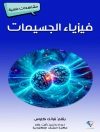This book covers recent analytical advances in the study of Rydberg atoms and molecules. The book presents classical descriptions of electron trajectories in Rydberg atoms, offering detailed visualisations and deep physical insight into the dynamics of the system. The book surveys studies of the energy shift of Rydberg atoms and molecules, the shapes of the spectral lines they emit, and counterintuitive phenomena observed in the process. At the cutting edge of its field, this research and reference text is ideal for graduate level students and researchers in quantum optics, quantum computing, plasma, and sensing technologies.
Key Features:
- Provides the latest advances in studying Rydberg atoms and molecules including detailed visualizations for deep physical insight
- Presents counterintuitive results on the shape of spectral lines of Rydberg atoms and ions
- Includes techniques for measuring nuclear shapes in atomic experiments –by using spectral lines of muonic ions
- Discusses classical analytical description of negative hydrogen ions and how this impacts practical applications previously considered impossible
- Introduces new types of the motion of a Rydberg electron in polar molecules
Mục lục
Contents
1. Introduction
2. Debye screening of circular Rydberg states of hydrogenic systems in collinear
electric and magnetic fields of arbitrary strengths
3. Two-electron Rydberg atoms and ions: counterintuitive analytical results on the
shape of their spectral lines
4. Helium atoms and helium-like ions in the high-frequency laser field
5. Classical Analytical Description of Negative Hydrogen Ions (to include the
6. Radio lines emitted by Rydberg hydrogen atoms in the Universe: classical
calculations of new data for their Stark broadening
7. Oscillatory-Precessional Motion of a Rydberg Electron around a Polar Molecule
(plus the effect of a magnetic field – to be studied)
8. The possibility of measuring nuclear shapes by using spectral lines of muonic ions
9. Muonic-electronic helium and helium-like ions
9.1. Classical analytical solution
9.2. Counterintuitive possibility of the linear Stark effect
10. Rydberg States of Positive Muonic Hydrogen Ion and Negative Muonic
Antihydrogen Ion
11. One-electron Rydberg quasimolecules
Giới thiệu về tác giả
Professor Oks has founded and co-founded new research fields including intra-Stark spectroscopy, masing without inversion, and quantum chaos. He has developed and implemented a large number of advanced spectroscopic methods for diagnosing various laboratory and astrophysical plasmas, and has published over 500 papers and 9 books. He is the Chief Editor of the journal “International Review of Atomic and Molecular Physics” and the Editor-in-Chief of the Physical Sciences section of the journal “Foundations”.












